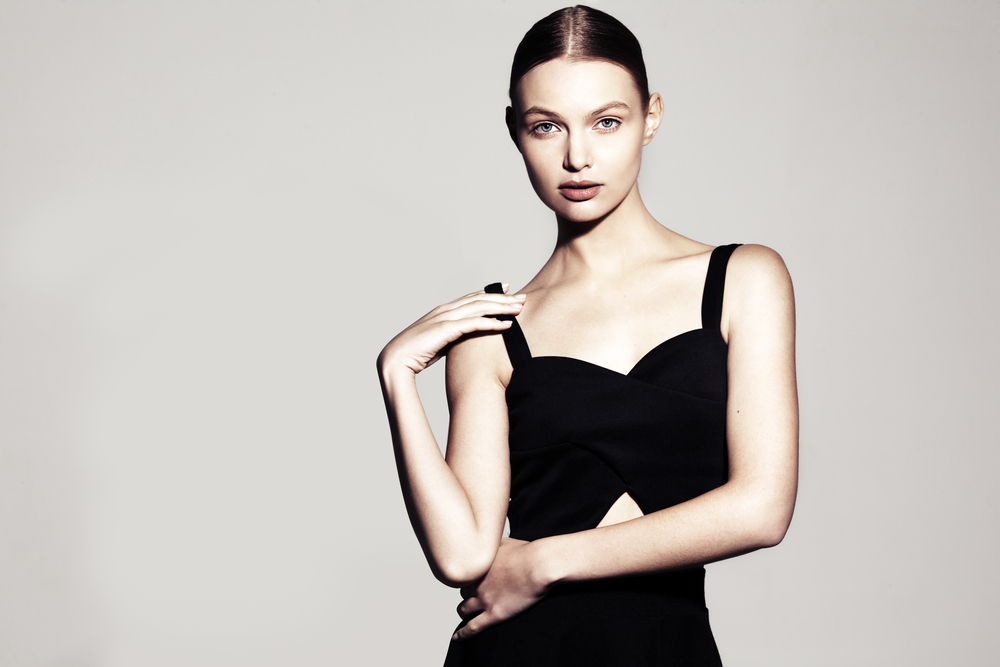
The Art of Expression: Mastering the Art of Modeling in Photoshoots

Introduction:
In the ever-evolving world of fashion and photography, modeling is a key element in creating captivating visuals that tell a story. Models are not merely a means to showcase the latest designs, but they are also artists who express themselves through their poses, expressions, and body language. It is through their mastery of this art that models can create timeless and impactful images that leave a lasting impression on the viewers. In this article, we will delve into the intricacies of modelling (or modeling) in photoshoots, exploring techniques, tips, and the essence of expression that separates a good model from a great one.
1. The Foundation of Expression:
modeling (by models) is an art form that relies heavily on non-verbal communication. It is the model's ability to communicate emotions, concepts, and narratives through their body language and expressions that gives life to a photograph. Whether it's showcasing confidence, vulnerability, power, or sensuality, the model acts as a conduit for the story the photographer seeks to tell. The starting point for any aspiring model is to cultivate an awareness of their body and its capacity to convey emotions.
2. Posing with Purpose:
Posing is a fundamental skill that separates a novice from an experienced model. It is important to understand that posing is not merely about being static or striking elaborate poses; it is about capturing a moment, a feeling, or a narrative. Each pose should have a purpose and intention behind it. This can be achieved by studying and practicing various poses, experimenting with different angles, and understanding the impact of body language and lines in photography.
3. Mastering Facial Expressions:
The face is a powerful instrument for expression. Models must learn to use their facial features to convey a range of emotions, from happiness and joy to sadness and intensity. It is essential to practice in front of a mirror and experiment with various expressions to understand which ones suit their unique features and the concept of the photoshoot. Confidence, authenticity, and the ability to emote naturally are key qualities that will make a model stand out.
4. Embracing Body Language:
Body language plays a crucial role in modeling as it can communicate volumes without uttering a single word. A slight shift in posture, the angle of a limb, or the positioning of the torso can drastically alter the mood and message of a photograph. Models must learn to control and manipulate their body language to create dynamic and visually appealing images. This can be achieved through proper body awareness, maintaining fluidity and grace in movements, and experimenting with unconventional and powerful poses.
5. The Art of Collaboration:
A successful photoshoot is a result of a harmonious collaboration between the model and the photographer. The model’s ability to understand and interpret the photographer's vision is of paramount importance. Models should be receptive to feedback, able to take direction, and contribute their creative ideas to bring the concept to life. By establishing a sense of trust and open communication, a strong collaboration can lead to extraordinary artistic achievements.
6. Building a Versatile Portfolio:
A model's portfolio is their calling card in the industry, showcasing their range, versatility, and unique style. Models should strive to create a portfolio that reflects their strengths and allows them to stand out. This can be achieved by working with a diverse range of photographers, exploring different genres of modeling (or modelling) , and continuously seeking opportunities to expand their skills and experiences.
Frequently Asked Questions:
Q1. What qualities make a successful model?A1. A successful model possesses qualities such as confidence, versatility, adaptability, strong work ethic, and a genuine passion for the art of modelling . With dedication and perseverance, anyone can nurture these qualities and succeed in the industry.
Q2. How can models improve their posing skills?
A2. Practice is key when it comes to improving posing skills. Models can study poses from fashion magazines, watch tutorials, and work with experienced photographers and mentors who can provide guidance and feedback. It is also important to experiment and find a posing style that feels authentic and suits their unique personality.
Q3. How can models develop a strong connection with the camera?
A3. Developing a connection with the camera requires practice and self-awareness. Models should experiment with different angles, expressions, and moods while maintaining eye contact with the camera. It is important to relax and be present in the moment to establish a genuine connection with the lens.
Q4. What should models consider when preparing for a photoshoot?
A4. Models should prepare for a photoshoot by understanding the concept and theme, researching the photographer's style, practicing poses and expressions, and taking care of their physical well-being. It is crucial to be punctual, professional, and maintain an open mindset to successfully execute the photographer's vision.
Q5. How can models overcome self-consciousness and exude confidence?
A5. Overcoming self-consciousness requires practice, self-acceptance, and a positive mindset. Models should focus on their strengths, embrace their uniqueness, and remember that confidence comes from within. Surrounding oneself with a supportive team and an encouraging environment also contributes to boosting self-confidence.
Conclusion:
The art of modeling in photoshoots goes beyond showcasing clothes; it is a means of expression, storytelling, and captivating the viewer's imagination. From mastering poses and facial expressions to understanding the importance of body language and collaboration, a successful model is continuously honing their skills. By embracing their individuality and pushing the boundaries of creativity, models can create compelling visual narratives that leave a lasting impact. So, aspiring models, embrace the art of expression and let your passion for modeling shine through in every photoshoot.
Other useful resources